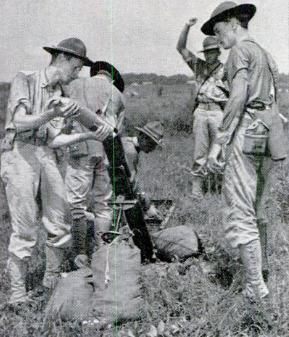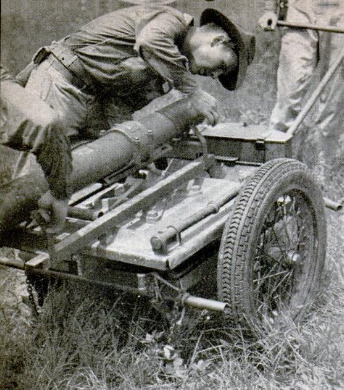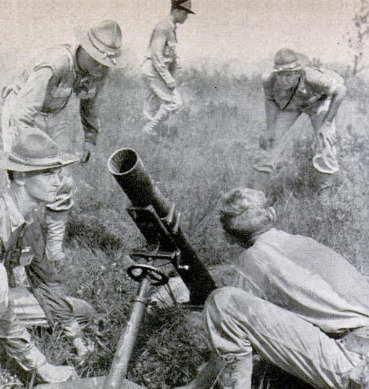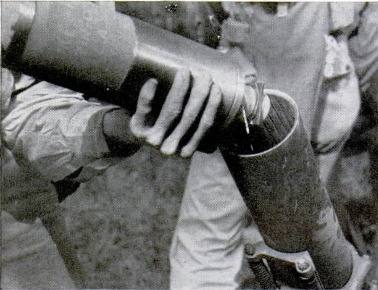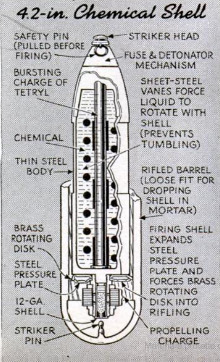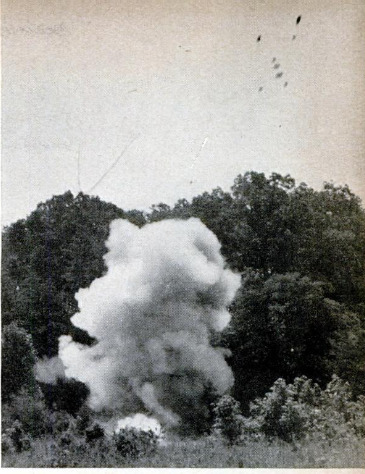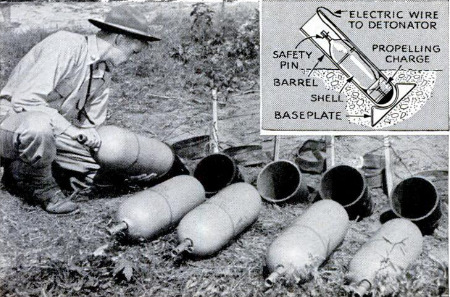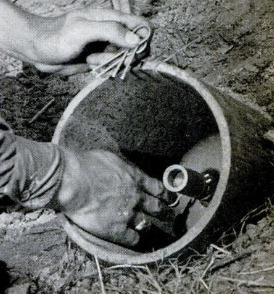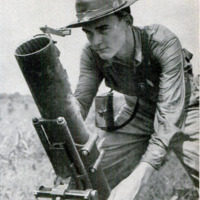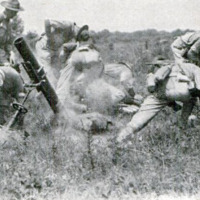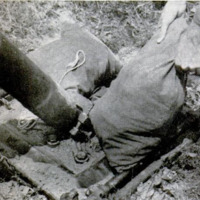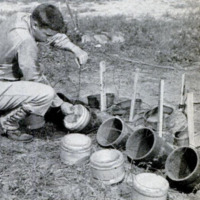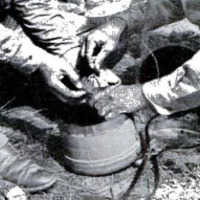Army's smoke throwers screen troop movements
Item
-
Title (Dublin Core)
-
Army's smoke throwers screen troop movements
-
Article Title and/or Image Caption (Dublin Core)
-
Title: Army's smoke throwers screen troop movements
-
extracted text (Extract Text)
-
TAKE an enemy by surprise, and he is al-
ready half defeated. How smoke screens
keep him guessing whether you are attack-
ing, withdrawing, receiving reinforcements,
or shifting troops was recently demon-
strated at Edgewood Arsenal, Md. Observers
saw in ear-splitting action the Army's latest
smoke-throwing equipment, developed by
its Chemical Warfare Service for every
situation to be encountered in modern war.
The principal weapon of the chemical
troops, their 4.2-inch mortar, is ideally
suited to the modern style of mobile fighting.
Light, speedy trucks and rubber-tired hand
carts whirl the mortars into position. Two
to five minutes more, and they are set up
and firing 25-pound projectiles containing
smoke or other fillings. Dropping a shell
into the barrel automatically explodes the propelling
charge and sends it on its way, so that the mortar fires
as fast as it can be fed with ammunition.
A rifled barrel, a major improvement in the mortar,
now imparts a whirling motion to the shell to steady it in
flight. Consequently the latest design has a maximum
range of 2,400 yards—more than double the performance
of earlier smoothbore types. To accomplish this, a brass
ring called a rotating disk encircles the base of the shell.
It just clears the barrel rifling, so that the shell will drop
smoothly to the bottom of the mortar. Explosion of the
propelling charge, acting against a steel pressure plate,
then expands the brass disk to engage the rifling—a
clever solution of a perplexing mechanical problem.
Another type of smoke thrower, the Livens projector,
fires only once from a single emplacement, in batteries
of 25 or more, and so is best suited to trench
or “positional” warfare. Shells used for train-
ing contain a smoke mixture. On a battlefield,
either smoke or -casualty-producing fillings
may be used. In preparation for a broadside,
the stubby projectors must be dug in, wired to
make a complete circuit, and loaded under
cover of darkness. A hand-pumped detonator
resembling those used in quarry blasting sets
off all the projectors at once. Plainly visible in
flight, their special 63-pound projectiles resem-
ble tumbling watermelons, as they are hurled
to a maximum range of 1,450 yards.
Unlike mortars and projectors, smoke pots
depend upon a favorable wind to put smoke
just where it is wanted, but such an oppor-
tunity cannot be overlooked. The Army's 14-
pound type, ignited by hand or electricity,
releases grayish-white smoke of high obscuring
value for morz than six minutes.
-
Language (Dublin Core)
-
Eng
-
Date Issued (Dublin Core)
-
1941-12
-
pages (Bibliographic Ontology)
-
113-115
-
Rights (Dublin Core)
-
Public domain
-
Archived by (Dublin Core)
-
Sami Akbiyik
 Popular Science Monthly, v. 139, n. 6, 1941
Popular Science Monthly, v. 139, n. 6, 1941


